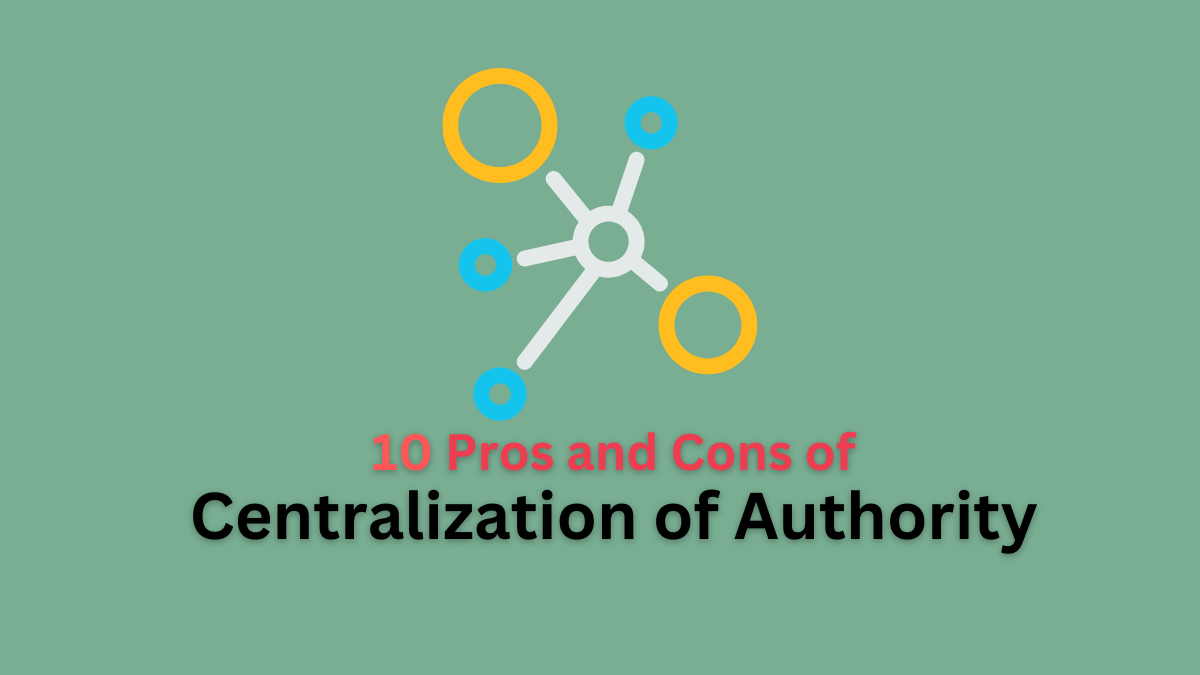Pros and Cons of Centralization
Centralization is an organizational structure in which decision-making authority is concentrated at the top levels of management. This structure is prevalent in small firms where the mission and vision are clear and executed vertically with a well-defined command chain.
In this article, we will delve into 10 major pros and cons of centralization of authority in business, so let’s get started:
Pros of Centralization of Authority
Let’s explore the 5 main benefits of centralization of authority in the workplace:
Clear Chain of Command
A centralized structure establishes a well-defined hierarchy where every employee knows their direct report and the overall decision-making process. This clarity reduces confusion about roles and responsibilities, ensuring that employees understand their tasks and to whom they must report.
This leads to increased efficiency and accountability, as there is no ambiguity about who is responsible for what, thereby streamlining workflow and decision-making.
Lower Operational Costs
Centralization reduces the need for multiple layers of management and associated administrative costs. Standardized procedures and processes lead to economies of scale and reduce the costs of outsourcing and redundant positions.
The organization can allocate resources more efficiently, leading to cost savings and potentially higher profit margins.
Effective Communication
In a centralized system, communication channels are direct and clear, reducing the chances of miscommunication. Decisions and policies are communicated from the top down, ensuring uniform understanding and implementation across the organization.
This helps in maintaining consistency in operations and policies, which is crucial for maintaining quality and standards, especially in customer-facing roles.
Rapid Decision Implementation
With fewer individuals involved in the decision-making process, decisions can be made and implemented quickly. This speed is crucial in responding to market changes, competitive actions, or internal issues.
Quick decision-making allows the organization to be agile and responsive, providing a competitive advantage in dynamic markets.
Read More: 10 Pros and Cons of Time Departmentalization
Improved Work Quality
Centralized control leads to the standardization of work processes and quality control measures. This ensures that all employees follow the same procedures, leading to consistent and high-quality output.
This uniformity is particularly important in industries where consistency is critical, such as manufacturing, healthcare, and customer service, ensuring that the company meets its quality standards.
Cons of Centralization of Authority
With notable benefits, centralization of authority also has some drawbacks. Here are five disadvantages to list:
Lack of Individual Initiatives
Centralized systems often stifle employee creativity and innovation because decision-making is restricted to senior management. Lower-level employees may feel their ideas are undervalued or ignored.
This can lead to decreased job satisfaction and morale, as employees feel less engaged and less motivated to contribute beyond their prescribed roles.
Read More: 10 Pros and Cons of Geographical Departmentalization
Absence of Specialization
When decisions are made centrally, it often overlooks the specialized knowledge and expertise available at lower levels of the organization. The central decision-makers may not have the specific knowledge required for specialized tasks.
This can result in suboptimal decisions and inefficiencies, as specialized tasks may not be handled by those with the most relevant expertise, leading to potential errors and reduced effectiveness.
Employee Loyalty Issues
Employees in a centralized organization may feel like mere cogs in a machine, with little autonomy or recognition for their contributions. The lack of personal initiative can diminish their sense of loyalty to the company.
This can lead to higher turnover rates, as employees seek more fulfilling roles where their input is valued, resulting in increased recruitment and training costs for the organization.
Read More: 10 Pros and Cons of Job Enlargement
Remote Control Challenges
Top executives in a centralized structure may be physically and operationally distant from the day-to-day activities of the organization. This distance can lead to a disconnect between decision-makers and those implementing the decisions.
This lack of proximity can result in poor implementation of decisions, as executives may not fully understand the practical challenges faced by lower-level employees.
Delays in Work
Centralization can slow down processes as decisions must go through several layers of hierarchy before implementation. Employees may have to wait for approvals and directives from senior management.
These delays can hinder productivity and responsiveness, making it difficult for the organization to react swiftly to opportunities or threats, thus potentially losing out to more agile competitors.
In conclusion, centralization of authority offers significant benefits such as a clear chain of command, reduced operational costs, effective communication, rapid decision implementation, and improved work quality. However, centralization also has notable drawbacks, including a lack of individual initiatives, absence of specialization, employee loyalty issues, challenges with remote control, and delays in work processes. Balancing centralization with elements of decentralization may help organizations mitigate these cons while leveraging the pros effectively
Read Next: 10 Pros and Cons of Group Decision Making
